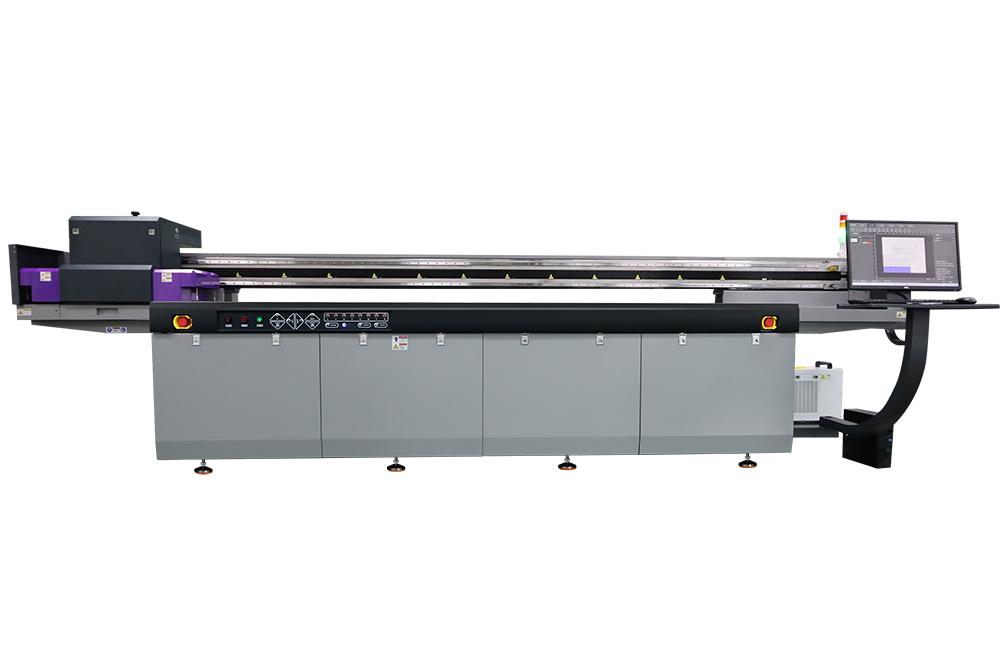UV Flatbed Printer: Environmental Impact and Sustainability
UV Flatbed Printer: Environmental Impact and Sustainability
In recent years, the UV flatbed printer has gained significant popularity in various industries, particularly in the printing and advertising sectors. This technology offers numerous advantages, including high-resolution prints, versatility in substrate materials, and rapid printing speeds. However, as with any industrial equipment, it is crucial to evaluate its environmental impact and assess its sustainability. This article delves into the environmental implications of UV flatbed printers and explores strategies for mitigating their ecological footprint.

Understanding UV Flatbed Printers
UV flatbed printers utilize ultraviolet (UV) light to cure or dry ink instantly after it is applied to a substrate. This process allows for quick and efficient printing on a wide range of materials, including glass, metal, plastic, wood, and even some textiles. The printer’s flatbed design enables it to accommodate large and irregularly shaped objects, making it a versatile choice for various applications.
UV inks are formulated to cure under UV light, which initiates a chemical reaction that transforms the ink from a liquid to a solid state. This process is known as photochemical curing and offers several advantages, such as reduced ink drying time, increased durability of prints, and improved resistance to fading and scratching.
Environmental Impact of UV Flatbed Printers
While UV flatbed printers offer numerous benefits, their environmental impact cannot be overlooked. Several factors contribute to their ecological footprint:
Ink Composition: UV inks contain volatile organic compounds (VOCs) and other chemicals that may be harmful to the environment if not properly managed. These compounds can emit harmful gases during the printing process, affecting air quality.
Energy Consumption: UV flatbed printers consume significant amounts of energy, particularly during the curing process, which requires intense UV light. This energy consumption contributes to greenhouse gas emissions and climate change.
Waste Generation: Like any printing process, UV flatbed printing generates waste, including ink residue, cleaning solutions, and substrate materials that may not be fully utilized. Improper disposal of these waste products can harm the environment.
Equipment Lifespan and Disposal: The manufacturing and disposal of UV flatbed printers also contribute to environmental impact. The production of these machines requires resources and energy, and their disposal can lead to electronic waste if not managed properly.
Strategies for Mitigating Environmental Impact
To ensure the sustainability of UV flatbed printing, it is essential to adopt strategies that mitigate its environmental impact. The following are some key approaches:
Eco-Friendly Inks: Manufacturers are increasingly developing UV inks with lower VOC content and higher biodegradability. Using these eco-friendly inks reduces harmful emissions and minimizes the impact on air quality.
Energy Efficiency: Incorporating energy-efficient components, such as LED UV lamps, can significantly reduce energy consumption. LED lamps require less power and have a longer lifespan than traditional UV lamps, resulting in lower greenhouse gas emissions.
Waste Management: Implementing effective waste management practices is crucial. This includes proper disposal of ink residue, recycling substrate materials, and using environmentally friendly cleaning solutions.
Equipment Lifespan and Upgradeability: Manufacturers can design UV flatbed printers with longer lifespans and greater upgradeability. This approach reduces the need for frequent replacements and minimizes electronic waste.
Sustainable Substrate Choices: Encouraging the use of sustainable or recycled substrate materials can further reduce the environmental impact of UV flatbed printing. For example, using recycled plastics or sustainably sourced wood can help conserve resources.
Operator Training and Awareness: Educating operators about the environmental impact of UV flatbed printing and providing training on best practices can lead to more sustainable operations. Operators can learn to minimize ink waste, optimize energy usage, and properly dispose of waste products.
Case Studies and Best Practices
Several companies have already taken steps to address the environmental impact of UV flatbed printing. For example, a leading printing company in the United States invested in LED UV flatbed printers, resulting in a 30% reduction in energy consumption compared to traditional UV printers. Additionally, they implemented a comprehensive waste management program, including ink recycling and the use of biodegradable cleaning solutions.
In Europe, a signage company adopted eco-friendly UV inks and sustainable substrate materials. They also trained their operators on best practices for reducing ink waste and optimizing energy usage. These changes not only reduced their environmental impact but also improved their brand reputation as an environmentally responsible company.
Future Developments and Innovations
As the demand for sustainable printing solutions grows, manufacturers are continually innovating to reduce the environmental impact of UV flatbed printers. Future developments may include:
The development of even more eco-friendly UV inks with lower VOC content and higher biodegradability.
The integration of renewable energy sources, such as solar panels, to power UV flatbed printers.
The design of closed-loop systems that capture and reuse volatile emissions from the printing process.
The development of software tools that optimize ink usage and energy consumption, further reducing waste and emissions.
Conclusion
UV flatbed printers offer numerous advantages in terms of print quality, versatility, and speed. However, their environmental impact cannot be ignored. By adopting strategies such as using eco-friendly inks, improving energy efficiency, implementing effective waste management practices, and making sustainable substrate choices, it is possible to mitigate the ecological footprint of UV flatbed printing.
As technology continues to advance, there is a growing opportunity for innovation in sustainable UV flatbed printing. Manufacturers, operators, and industry leaders must work together to ensure that this technology remains a viable and environmentally responsible option for the future. Through collaboration and a commitment to sustainability, UV flatbed printing can continue to thrive while minimizing its impact on the environment.
